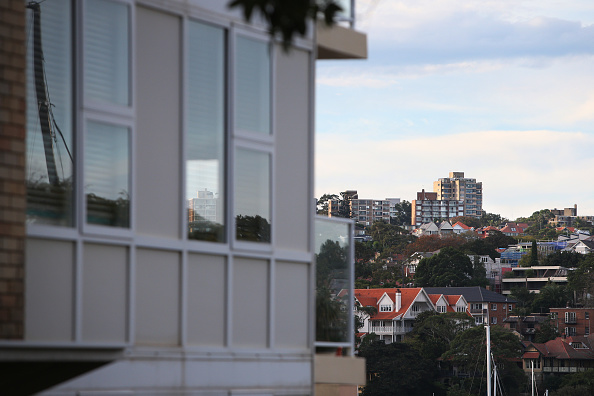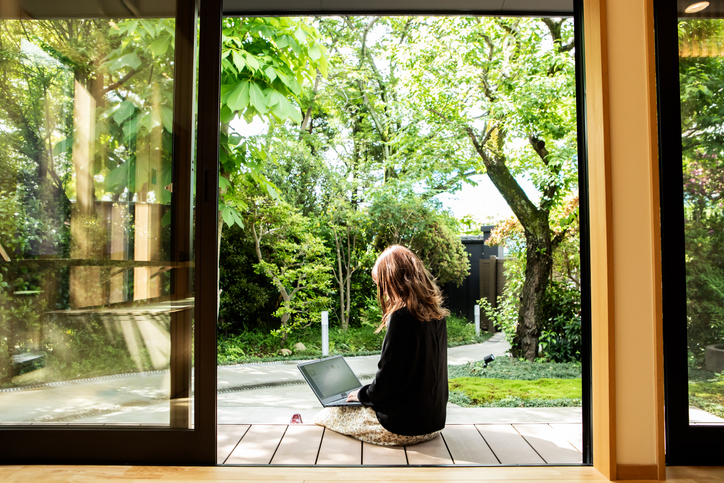From Remote Work to Hybrid Work: The Tech You’ll Need To Link Home And Office
Your tech life is about to get messy. Here are some solutions.
Hope your magic Mary Poppins, go-back-to-the-office bag is ready. Let’s see, you’re going to need your laptop, your laptop’s power adapter, your headphones, your headphones’ power adapter, your ring light, your ring light’s power adapter…
Oh, and you thought this was just a one-time pack? That’s cute. Prepare to do this two to three times a week, as you split time between your home-office and your office-office for the next, well, forever.
Welcome to the exciting new world of hybrid work.
“Somewhere in the vicinity of 60% of the workforce are choosing the hybrid option,” said Gartner analyst Suzanne Adnams, “which means their ideal is working at home and coming into the office three days a week.”
If I had a dollar for every time I heard “two to three days at the office” while reporting this column, a socially distanced steak dinner would be on me.
What isn’t as clear? Where you’ll go once you get to the office. That depends on your employer. Here are three possible options:
• Same-old desking: Business as usual. You still get your own desk, but maybe now, your chair and your colleague’s chair are farther apart.
• Hot desking: The horribly named trend where employees don’t have a permanently assigned desk. Also referred to as hoteling, flexing or desk swapping, this is becoming the leading hybrid option for a key reason: It doesn’t make sense to have one desk per person if people only come in a few times a week.
• No desking: The office isn’t for solo work but collaboration. So instead of desks there are mostly group meeting areas, with a privacy phone booth here and there. Companies including Dropbox have committed to this route.
I certainly can’t tell you in detail what’s going to happen at your company, but I can say this hybrid life will make you even more dependent on your tech tools. The very tech that enables us to work from anywhere (laptops and smartphones, video calling, Slack) is also the technology that stands to make this so messy.
Your colleagues are at the office whiteboarding but you’re stuck at home in a little Zoom box? You survive the commute to the office, only to discover you left your USB-C dongle on the kitchen table. Hey, Bob From Accounting, stop screaming on your video call. This isn’t your basement!
But I have hope. Not only did we prove our tech resilience when we embarked on the Great Work-From-Home Experiment a year ago but the makers of our most depended-upon products are paying attention and adapting for this next phase. Here are a few of the biggest hybrid challenges and some potential solutions.
I’m back to the good old commute, but at my hot desk, I have nothing, not even a coffee-stained mug.
There are no two ways about it, you’re going to need a bigger bag. And for the record: Anyone who tells you a backpack is only for middle schoolers is just wrong.
When you head to your building (assuming you remember where it is), you might have to pull out your phone. Your employer might require Covid-era health check-ins and other precautions, but it also might give you the opportunity to book your workspace, through systems like Robin or Salesforce’s Work.com.
Congrats, you made it to “your” desk. I can’t guess the tech that will be available when you get there, but expect it to be pretty bare-bones, especially if you BYOL (you know, bring your own laptop).
In Salesforce’s redesigned spaces, for instance, employees get just a desk and two side-by-side monitors, Jo-ann Olsovsky, the company’s chief information officer, told me.
At least Salesforce employees will be able to keep other belongings in lockers and easily get other tech peripherals—mice, keyboards, headsets, chargers—from tech vending machines situated around the offices. You don’t pay. Just swipe your employee badge, hit the button for your item and grab it from the bottom tray.
If your office’s vending machines only dispense stale Doritos, you might request stuff through your IT department. Regardless, you’ll likely be dragging your favorite equipment to and fro. Certainly, more expensive gear that you don’t own two of—tablets, microphones, noise-canceling headphones—will be in your bag.
For the smaller stuff—battery packs, charging cords, a mouse and the miscellaneous adapters to connect drives, memory cards and cables to your laptop—you’ll need a dongle bag. Don’t have one yet? Oh, you must. The one I just got, the InCase nylon accessory organiser, has mesh pockets and straps for organizing different cords and adapters. It lists for $50.
I’m at the office with some colleagues. Other colleagues are at home.
If you think going back to the office means the end of video calls, I have bad news for you. Expect most meetings from now on to have a video component and there to be even more cameras in the office—and not just in the conference rooms.
“It’s hard to imagine going into an office now and all those little closed spaces that might have had a phone in them not being video enabled,” Logitech Chief Executive Bracken Darrell told me, adding that he expects some companies to put webcams at hot-desk stations as well.
Executives who work on collaboration platforms at Microsoft, Google, Slack and Zoom said a key need was for employees at home and at work to feel like they’re on a level playing field when on calls and working together. Here are initiatives they’ve launched:
Microsoft Teams: A system called Teams Rooms links conference rooms with remote users who want to join in. Voice recognition in new compatible speakers can identify who in a room is talking, and the person’s name will appear on screen. You won’t be embarrassed dialling in from home, either: A new presenter mode removes the background of your video and places you in front of the presentation, or positions the presentation in a box over your shoulder in “reporter mode.”
Google Workspace: Google also powers speakers and cameras for the office, but as people leave the house, they’ll be using their phones more for video calling too. An update to the Google Meet phone app will better display people on video. A coming update to Google Docs, Sheets and Slides will include the ability to overlay voice and video chat as people work together on documents.
Slack: An audio-room feature is coming, so users can quickly hop on a conference call. Think Clubhouse but for quick meetings. The company, which Salesforce agreed to buy, is also adding a feature for sharing prerecorded video messages. This could help a manager send an announcement to everyone, whether they’re in the office or at home.
Zoom: The pandemic’s breakout star has its own conference-room service called, say it with me, Zoom Rooms. The company’s Zoom Rooms Controller app for iOS and Android lets people in the conference room control meetings from their phones—no need to touch the grimy shared keyboard or room control panel.
A bigger challenge: What if the in-person meeting includes some physical stuff, like a whiteboard? How do the people at home keep up and contribute?
Google and Microsoft have tried to make that easier. Microsoft makes the Surface Hub—a giant Windows tablet for offices that runs the cloud-connected Microsoft Whiteboard app. Those on a Microsoft Teams call can view and add to the digital whiteboard. Same idea with Google’s Jamboard. People in the office can scribble on the giant screen and those in a Google Meet video call can view and add to it. Zoom works with third-party hardware makers to integrate whiteboarding.
I’m working from home today—how do I share that with the world?
The upside to all this is being stuck at home won’t be as bad as it once was. You’re already honing your setup, and some companies even plan to continue subsidizing employees home-office needs. And now that you’ve gotten used to overcommunicating your schedule and deadlines? You just keep doing that, wherever you are.
Google’s added some features to its calendar to help, including what it calls “segmentable working hours.” You can make it clear to colleagues what location you’re working from or if you’re doing something else, like exercising or commuting. Slack is also exploring adding more status options to indicate your whereabouts.
This return to the office may have a slick name—hybrid work—but make no mistake, it’s as hybrid as Frankenstein’s monster. Just remember, one year ago we got through a pretty cataclysmic work change, and we will do it again. Just don’t forget about the dog.
 Copyright 2020, Dow Jones & Company, Inc. All Rights Reserved Worldwide. LEARN MORE
Copyright 2020, Dow Jones & Company, Inc. All Rights Reserved Worldwide. LEARN MORE
This stylish family home combines a classic palette and finishes with a flexible floorplan
Just 55 minutes from Sydney, make this your creative getaway located in the majestic Hawkesbury region.
As Paris makes its final preparations for the Olympic games, its residents are busy with their own—packing their suitcases, confirming their reservations, and getting out of town.
Worried about the hordes of crowds and overall chaos the Olympics could bring, Parisians are fleeing the city in droves and inundating resort cities around the country. Hotels and holiday rentals in some of France’s most popular vacation destinations—from the French Riviera in the south to the beaches of Normandy in the north—say they are expecting massive crowds this year in advance of the Olympics. The games will run from July 26-Aug. 1.
“It’s already a major holiday season for us, and beyond that, we have the Olympics,” says Stéphane Personeni, general manager of the Lily of the Valley hotel in Saint Tropez. “People began booking early this year.”
Personeni’s hotel typically has no issues filling its rooms each summer—by May of each year, the luxury hotel typically finds itself completely booked out for the months of July and August. But this year, the 53-room hotel began filling up for summer reservations in February.
“We told our regular guests that everything—hotels, apartments, villas—are going to be hard to find this summer,” Personeni says. His neighbours around Saint Tropez say they’re similarly booked up.
As of March, the online marketplace Gens de Confiance (“Trusted People”), saw a 50% increase in reservations from Parisians seeking vacation rentals outside the capital during the Olympics.
Already, August is a popular vacation time for the French. With a minimum of five weeks of vacation mandated by law, many decide to take the entire month off, renting out villas in beachside destinations for longer periods.
But beyond the typical August travel, the Olympics are having a real impact, says Bertille Marchal, a spokesperson for Gens de Confiance.
“We’ve seen nearly three times more reservations for the dates of the Olympics than the following two weeks,” Marchal says. “The increase is definitely linked to the Olympic Games.”

Getty Images
According to the site, the most sought-out vacation destinations are Morbihan and Loire-Atlantique, a seaside region in the northwest; le Var, a coastal area within the southeast of France along the Côte d’Azur; and the island of Corsica in the Mediterranean.
Meanwhile, the Olympics haven’t necessarily been a boon to foreign tourism in the country. Many tourists who might have otherwise come to France are avoiding it this year in favour of other European capitals. In Paris, demand for stays at high-end hotels has collapsed, with bookings down 50% in July compared to last year, according to UMIH Prestige, which represents hotels charging at least €800 ($865) a night for rooms.
Earlier this year, high-end restaurants and concierges said the Olympics might even be an opportunity to score a hard-get-seat at the city’s fine dining.
In the Occitanie region in southwest France, the overall number of reservations this summer hasn’t changed much from last year, says Vincent Gare, president of the regional tourism committee there.
“But looking further at the numbers, we do see an increase in the clientele coming from the Paris region,” Gare told Le Figaro, noting that the increase in reservations has fallen directly on the dates of the Olympic games.
Michel Barré, a retiree living in Paris’s Le Marais neighbourhood, is one of those opting for the beach rather than the opening ceremony. In January, he booked a stay in Normandy for two weeks.
“Even though it’s a major European capital, Paris is still a small city—it’s a massive effort to host all of these events,” Barré says. “The Olympics are going to be a mess.”
More than anything, he just wants some calm after an event-filled summer in Paris, which just before the Olympics experienced the drama of a snap election called by Macron.
“It’s been a hectic summer here,” he says.

AFP via Getty Images
Parisians—Barré included—feel that the city, by over-catering to its tourists, is driving out many residents.
Parts of the Seine—usually one of the most popular summertime hangout spots —have been closed off for weeks as the city installs bleachers and Olympics signage. In certain neighbourhoods, residents will need to scan a QR code with police to access their own apartments. And from the Olympics to Sept. 8, Paris is nearly doubling the price of transit tickets from €2.15 to €4 per ride.
The city’s clear willingness to capitalise on its tourists has motivated some residents to do the same. In March, the number of active Airbnb listings in Paris reached an all-time high as hosts rushed to list their apartments. Listings grew 40% from the same time last year, according to the company.
With their regular clients taking off, Parisian restaurants and merchants are complaining that business is down.
“Are there any Parisians left in Paris?” Alaine Fontaine, president of the restaurant industry association, told the radio station Franceinfo on Sunday. “For the last three weeks, there haven’t been any here.”
Still, for all the talk of those leaving, there are plenty who have decided to stick around.
Jay Swanson, an American expat and YouTuber, can’t imagine leaving during the Olympics—he secured his tickets to see ping pong and volleyball last year. He’s also less concerned about the crowds and road closures than others, having just put together a series of videos explaining how to navigate Paris during the games.
“It’s been 100 years since the Games came to Paris; when else will we get a chance to host the world like this?” Swanson says. “So many Parisians are leaving and tourism is down, so not only will it be quiet but the only people left will be here for a party.”
This stylish family home combines a classic palette and finishes with a flexible floorplan
Just 55 minutes from Sydney, make this your creative getaway located in the majestic Hawkesbury region.






















